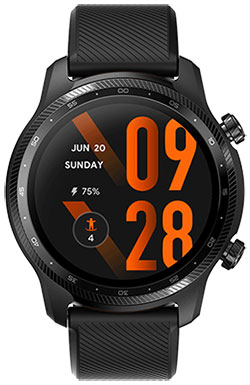Last week was crazier than usual in the tech world — which says a lot.
Elon Musk was sued by Twitter to complete a deal it didn’t want initially; some influential folks are falsely blaming Qualcomm for Apple’s inability to execute on 5G; and Netflix partnered with Microsoft instead of Google or Comcast for ad-generated content.
Let’s walk through some of this apparent insanity and see what’s going on.
We’ll close with my product of the week, a new smartwatch for Android using Qualcomm technology that gives the market-leading Apple Watch a run for the money at a reasonable price.
Musk-Twitter: Another Would-Be Marriage From Hell
Elon Musk acquiring Twitter never made any sense whatsoever, regardless of what side you were on.
Musk already has too many difficult companies to manage, he doesn’t have any media experience, and Twitter is a fixer-upper, meaning it would require anyone running it to focus on the project exclusively to turn the firm around. Musk can’t do that.
From Twitter’s perspective, Musk hated the existing management team, policies, and critical staff before he took over the company, meaning his term as CEO would not only cost a lot of people their jobs but that he’d likely try to claw back any past compensation to top management.
On top of that, Musk allegedly was abusive to certain members of that staff, some of whom are part of protected groups, making him a potential HR nightmare. There is also the recent disclosure that he’d impregnated a subordinate which would typically be a termination-level offense at a company like Twitter.
Add to this the facts that Tesla buyers were jumping ship because of Musk’s Twitter takeover attempt, and the SEC was anything but amused, this acquisition looked like a train wreck in slow motion. Much of the damage to Twitter, which has included the inability to retain or acquire critical employees, along with a troubling reduction in revenue as advertisers began to question the company’s future, is unprecedented.
Now that he has critically damaged Twitter, Musk no longer wants to buy it. I can’t blame him for walking away given the shape Twitter is now in. However, since he appears to have caused much of that damage, neither can I blame the Twitter board for taking Musk to court.
In the end this highlights the need for better protections and controls over CEOs to keep them from going off the rails and crippling companies that otherwise would have remained viable — and to better protect employees and investors from avoidable catastrophic outcomes.
Qualcomm-Apple: Let’s Play ‘Who’s the Bully?’
I was on an analyst call last week during which Apple was called out again for bullying Qualcomm.
With resources that are a magnitude greater than Qualcomm’s, Apple supporters continue to try and convince courts and regulators that they are the victim and Qualcomm is the bully.
This latest attempt argues that two Qualcomm patents are keeping Apple from creating a viable 5G modem, even though it is far more likely this was caused by the process of acquiring Intel’s failed modem effort and a subset of the employees who were unsuccessfully driving it.
A D V E R T I S E M E N T
I equate this to acquiring a losing racing team and then screaming that the winners were taking unfair advantage because you can’t win. Maybe if you’d bought a winning team and then didn’t break it?
Oddly, not only do the two patents have literally nothing to do with the 5G effort, but Apple has a Qualcomm license so it should be able to use them without penalty.
Typically, when you have a design that violates another firm’s patents, you either license from the firm that owns the patents, or you find a legal workaround. Apple is licensing but claims the small price (generally under $10 per iPhone) is too high even though it’s clear their workarounds are even more expensive.
Situations like this prove that licensing is a good value because it’s far cheaper than reinventing the technology. Still, rather than admit Qualcomm gave Apple a very good licensing deal, Apple supporters argue that Apple should be able to set Qualcomm’s prices. This is in spite of the fact that Apple’s own pricing model is considered premium and contributes to profits that drive the valuation of Apple far higher than that of Qualcomm.
Apple continues to lose this battle in court — but apparently it thinks that being a bully is something it’s entitled to — so I really doubt this will end well for the company as a result.
Netflix-Microsoft: Why Not Google or Comcast?
Netflix is in trouble because it didn’t anticipate that many, if not most, of its major content suppliers, especially Disney, would choose to walk away from the platform and go it alone. This shouldn’t have been a surprise given we’ve been talking disintermediation since the beginning of the internet.
Had Netflix owned most of its content, it would have prevented those other providers from stripping Netflix of its customers, which is exactly what happened. To address the related revenue shortfall, Netflix is going after the symptom of the problem (the revenue shortfall) by partnering with Microsoft: a company that understands how to set up a digital store for both product and services.
Both Google and Comcast, which have similar services, could have helped. But those “similar services” are competitors to Netflix, so using either of them would have been ill advised. In addition, Google and especially Comcast don’t partner that well and Microsoft has partnering as a significant competitive advantage. That advantage only got stronger under the stewardship of CEO Satya Nadella who is a huge open source and partnership advocate.
While Netflix is not yet directly going after the cause of its problem (lack of strong content ownership), this move, assuming it is successful, should improve revenues and profits which will help it acquire and hold more content providers which would eventually fix the underlying problem.
However, to avoid history repeating itself, Netflix needs to understand the mistake it made, which is that the firm needs to control what it sells. Otherwise, those that do control it are likely to make the company redundant.
Wrapping Up
Musk’s bid to purchase Twitter never made any sense to either side, and his abuse of that company should come with penalties given he has nearly destroyed it in an effort that was likely to be catastrophic for both sides.
Apple continues to bully Qualcomm. Were it me, I wouldn’t do business with that company because of the abuse alone. But the courts continue to do the right thing by supporting the abused party, Qualcomm.
Finally, while Netflix didn’t understand the problems associated with not owning much of its most-popular content, it’s choosing a partner to help fix the revenue side of the issue. It chose wisely by partnering with Microsoft which partners better than other possible choices and won’t use the information it gains from the deal to hurt Netflix. Still, Netflix will still need to fix the core problem: assuring that in the future no one can walk away with critical content.

Mobvoi TicWatch Pro 3 Ultra GPS
I keep searching for a smartwatch that is better than the Apple Watch and I keep falling short. This is because Apple does a great job of integrating its smartwatch and phone while those on the Android side just don’t seem up to the competition.
 TicWatch Pro 3 Ultra GPS
TicWatch Pro 3 Ultra GPS
The top Apple Watch competitor so far is the new TicWatch Pro 3 Ultra GPS which is the best Android-based watch I’ve tested up to now. Using Qualcomm’s latest Snapdragon Wear 4100 platform for smartwatches, and Google’s Wear OS, this watch is impressive.
What does it do better than an Apple Watch?
This list is short as I can only point to two things, but the first thing is big. The TicWatch Pro 3 Ultra GPS has two overlapping screens. One is full color OLED, but the other is a very low-power FSTN screen that potentially gives the watch up to a week of battery life. This is substantially longer than any Apple Watch I’ve yet seen.
Not as big, but still important, is that the watch is round like most watches in the market, not square like an iPad mini for your wrist. I prefer a watch that looks like a watch and not a little TV screen.
The software is down-level now. It should be Wear OS 3 but only uses version 2.36 for now (I understand an upgrade is coming in a few months). However, the watch is still snappy, and it has a few dedicated apps that manage your health, pulse, oxygen levels, breathing, relaxing, hearing and sleep.
I particularly like how quickly you can configure this TicWatch for a walk or run. It has both a microphone and a speaker which is critical for the phone I have — the Microsoft Surface Duo 2 which looks great but is awkward to hold to your face during a call.
Mobvoi has done a nice job with this watch and at a suggested retail price of $299 it isn’t a bad deal. While I can hardly wait for the update to Google Wear OS 3, the latest TicWatch Pro 3 Ultra GPS is a great alternative to the Apple Watch for those of us who don’t use iPhones — and it is my product of the week.
The opinions expressed in this article are those of the author and do not necessarily reflect the views of ECT News Network.
Source by www.technewsworld.com






























